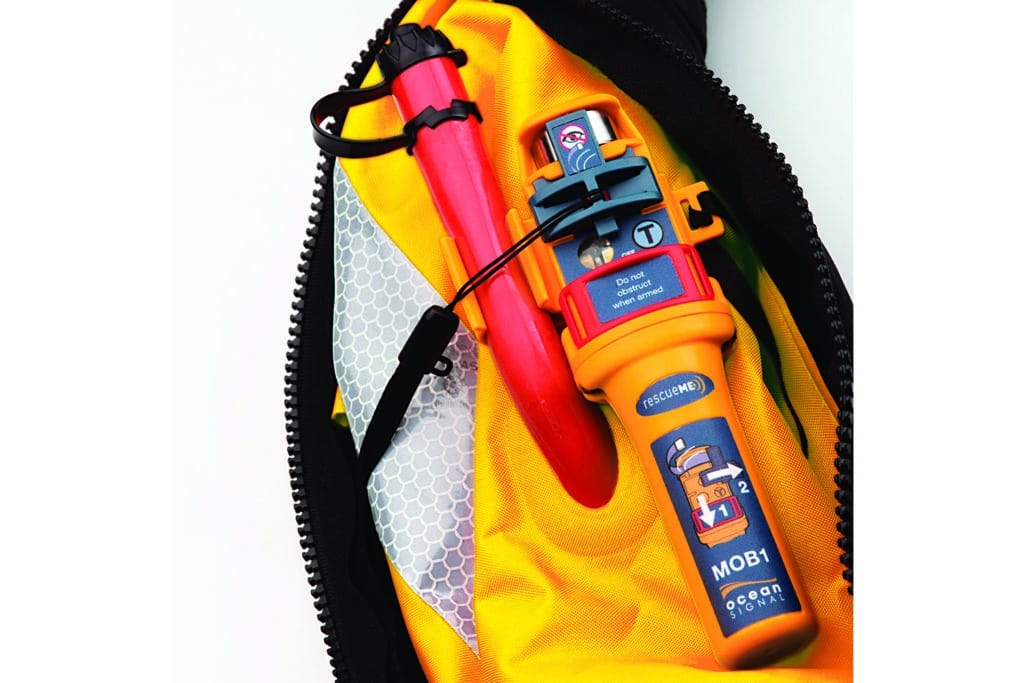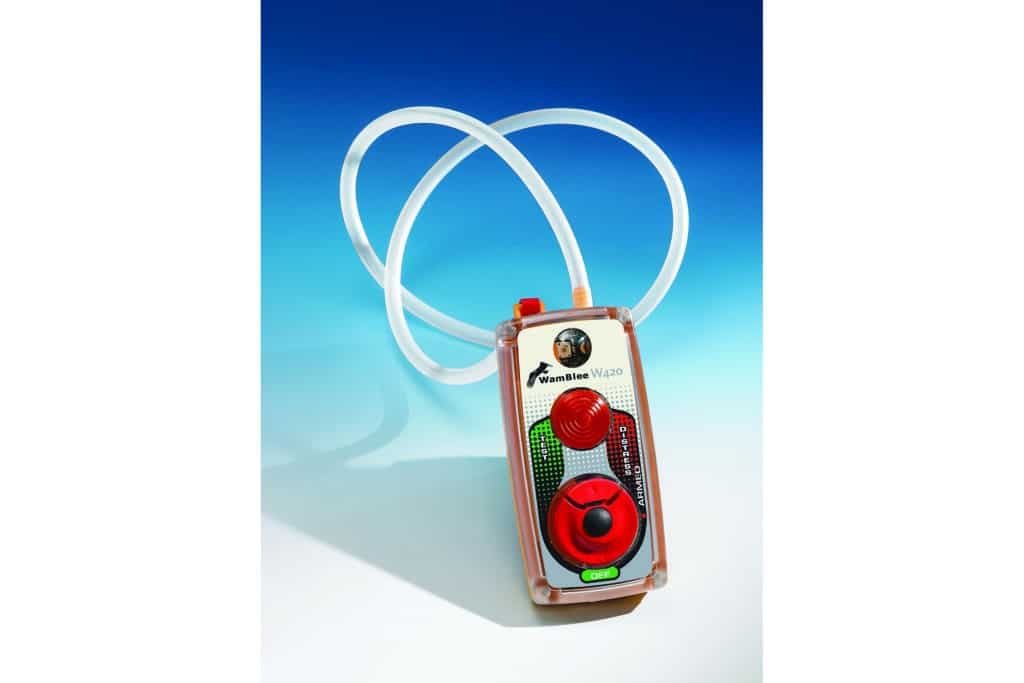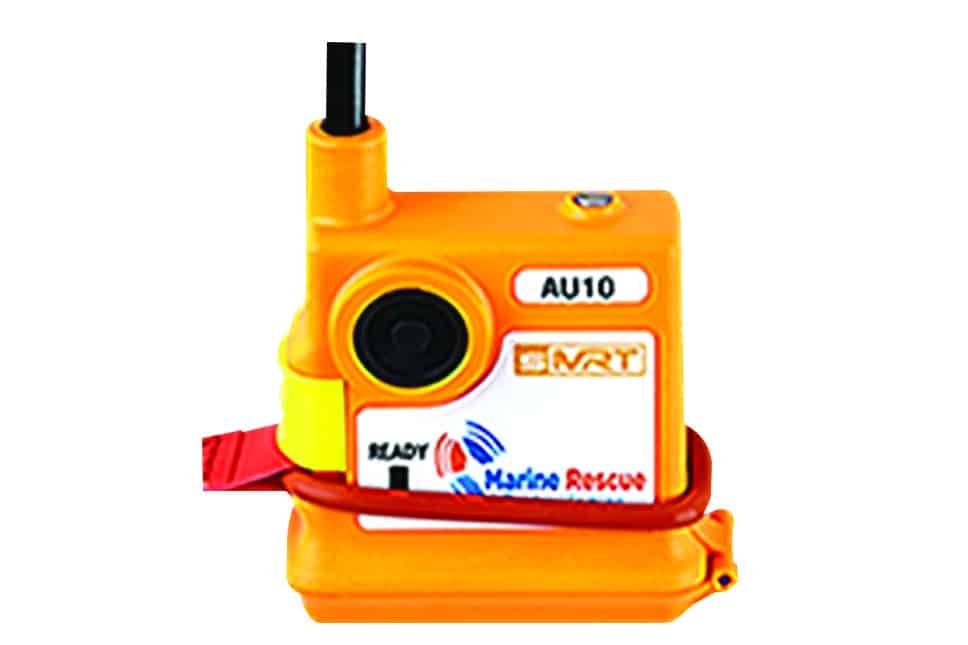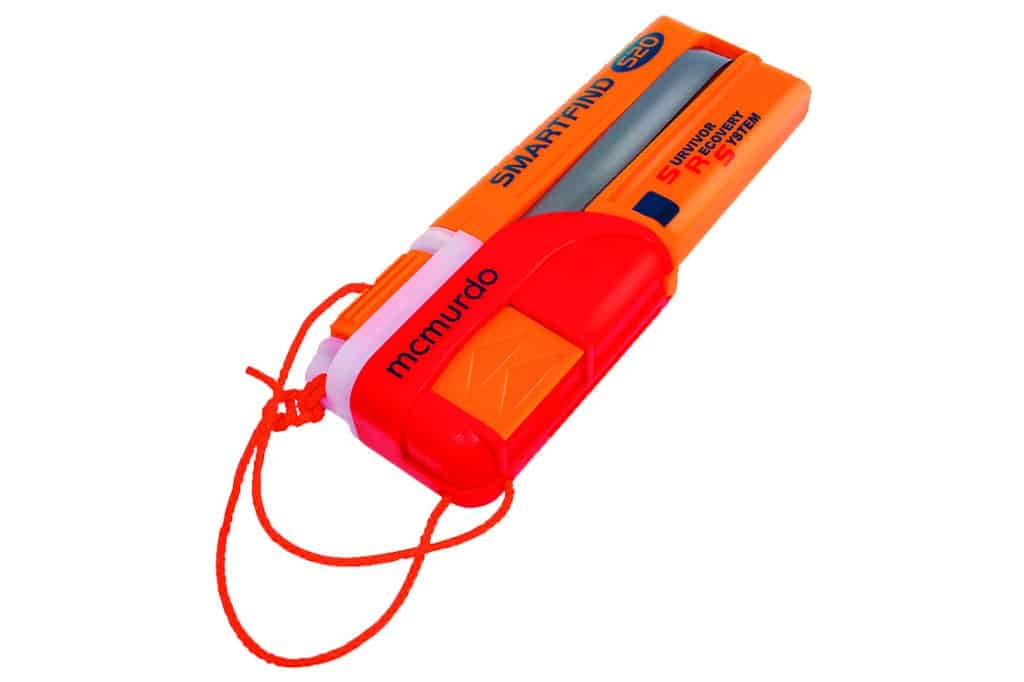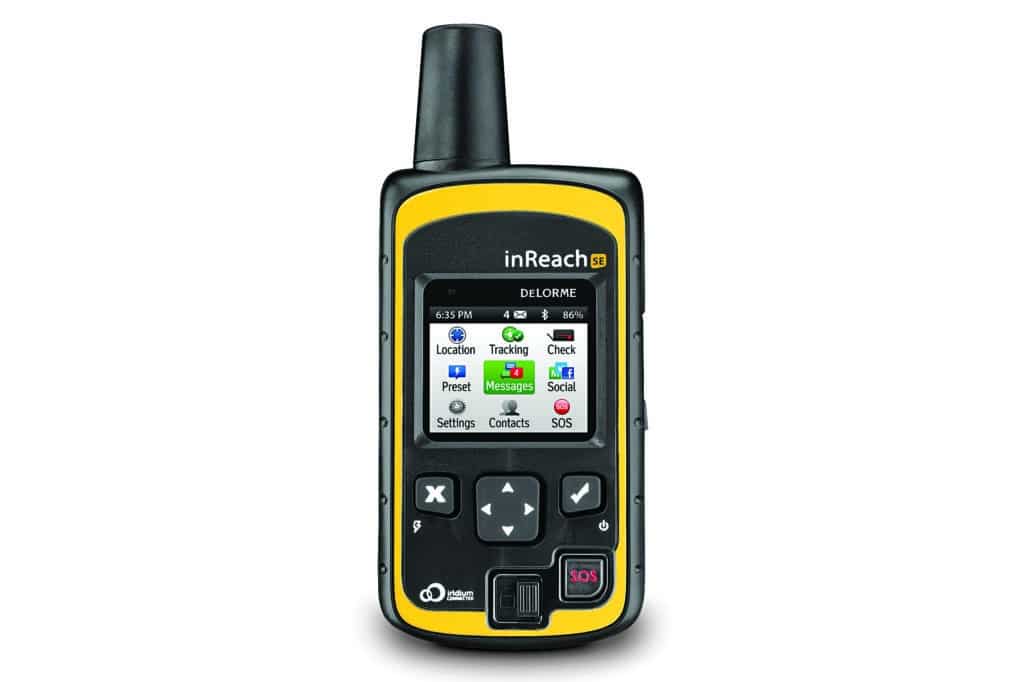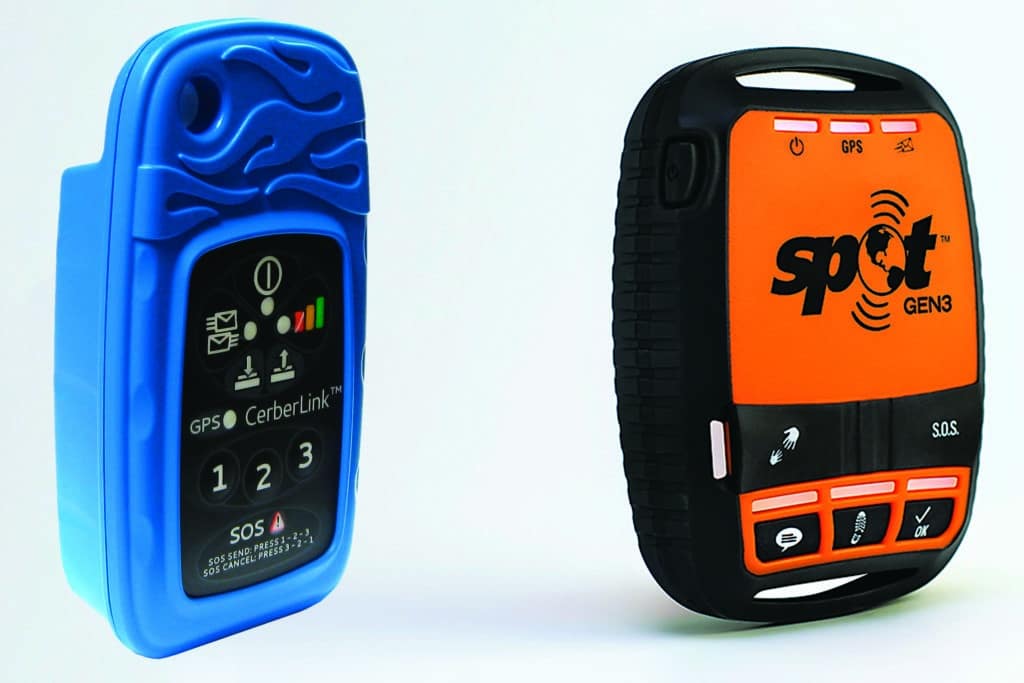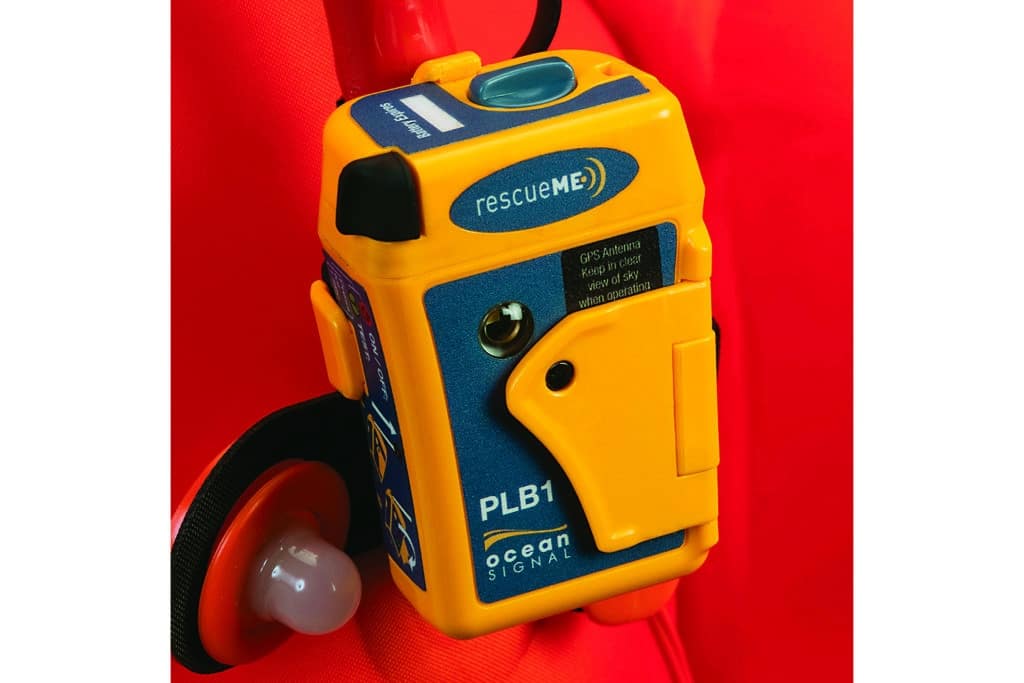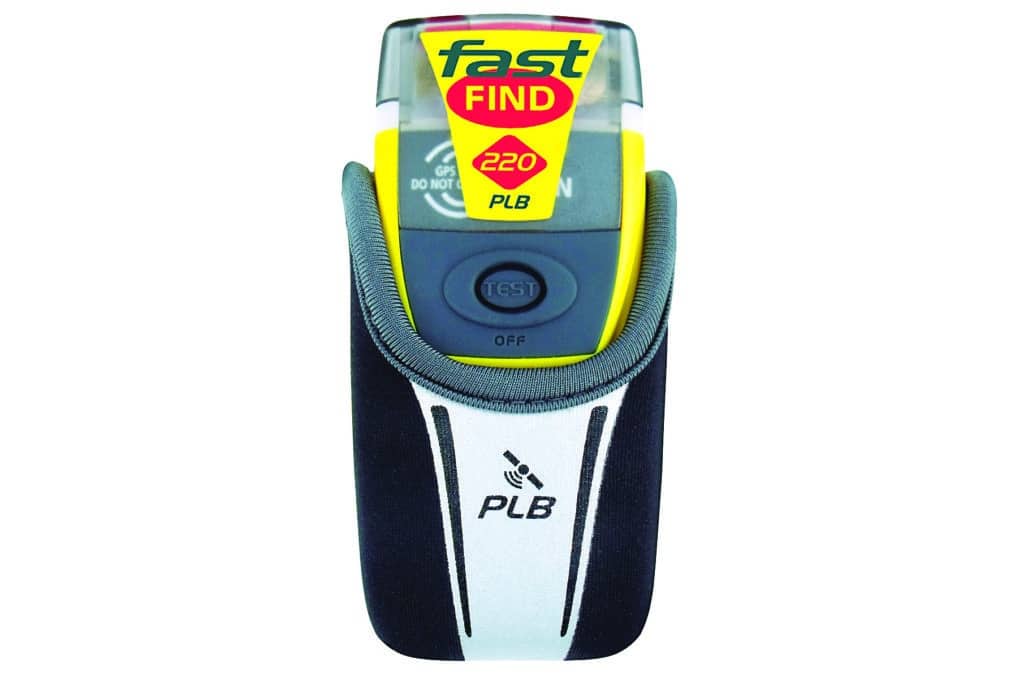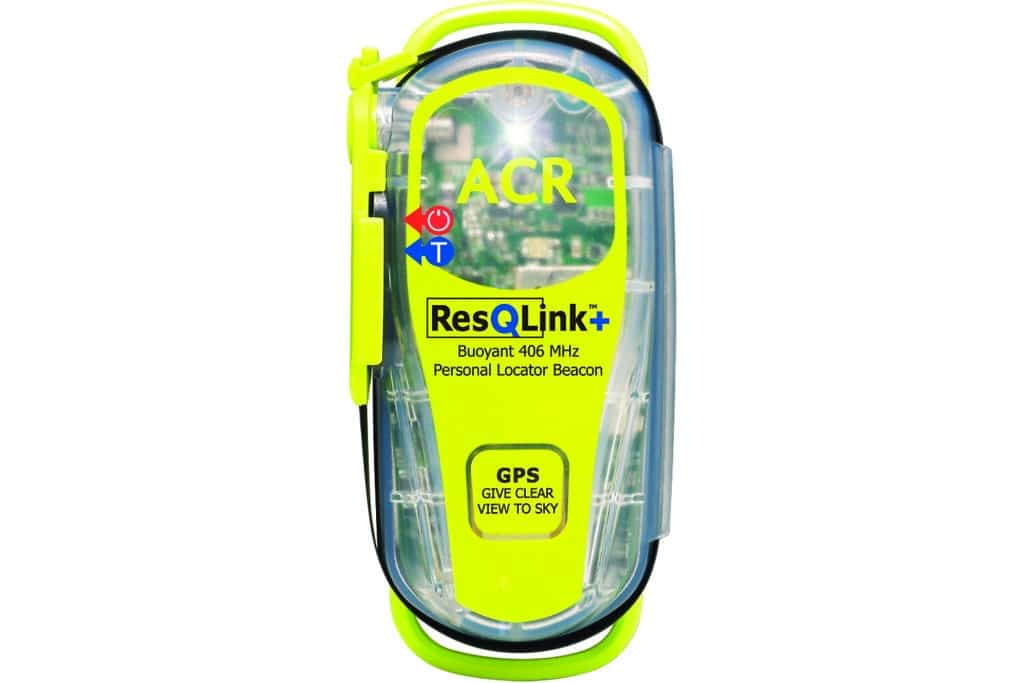Minutes after rounding Fastnet Rock in the pole position during the 2011 Fastnet Race, the super maxi Rambler 100 lost her keel and quickly inverted, sending 20 sailors into the brine, her now-stubby keel strut and twin rudders thrusting awkwardly into the overcast Irish sky. Three crewmembers quickly scampered on top of the upturned hull while 12 more struggled to join them, leaving five sailors — including owner and skipper George David and his wife, Wendy — in the 57-degree water.
“No one knew we’d flipped,” says Peter Isler, a two-time America’s Cup-winning navigator. “Other boats sailed right past us.” While Rambler 100 was massive, her topsides were white and her undercarriage light gray — not the easiest color scheme to spot from a windward rail on a passing boat, especially when 25-knot winds churned up 8-foot square waves. Still more important was that Rambler 100 had inverted less than 60 seconds after dropping her keel bulb, giving her crew precious little reaction time.
As others struggled to get out of the water, Isler remained at the nav station, desperately trying to issue a Mayday. Despite his best efforts, the transmission wouldn’t broadcast. Finally, rising waters forced him to swim to safety. Once topside, Isler and another crewmember activated their Personal Locator Beacons (PLBs) and began waiting along with the remainder of the crew.
Luckily, they didn’t have long to wait.
The PLBs transmitted their satellite signals skyward, and just minutes later, shore-based telephones started ringing. The Royal National Lifeboat Institution dispatched a search-and-rescue team that located the boat. At the scene, the shipwrecked sailors immediately alerted the rescuers to the five still in the water, who’d drifted off after the capsize. They were also rescued.
While the Rambler 100 story ends well, US Sailing’s official incident report likely would have read much differently if it weren’t for the two PLBs that were activated. While these pocket-size beacons are small and lightweight, incidents such as this demonstrate that for a few hundred dollars, any sailor can buy a sophisticated electronic safety tether. The good news is that today there are lots of different types of emergency beacons and electronic man-overboard (MOB) devices on the market, giving cruising sailors options depending on the type of sailing they enjoy and where their voyaging will eventually take them.
Overboard Alarms
Given that the majority of man-overboard situations are successfully resolved via self-rescue, a critical first step in that process involves alerting the remaining crew to the emergency. To that end, manufacturers build a variety of man-overboard alarms that are designed to create an onboard ruckus, and in many cases even drop a pin on the vessel’s GPS display, marking the spot where the man-overboard signal was first received.
Some crew-overboard alarm systems are comprised of a centrally mounted base station and electronic pendants that are worn or carried by individual sailors. These systems typically fall into one of two camps: active or reactive devices. Active man-overboard alarms establish constant radio-frequency (RF) communications with their base station. Should a crewmember fall overboard and the pendant travel out of range of the base, RF communications are lost and an onboard alarm is triggered. Conversely, reactive alarms, such as Emerald Marine’s ALERT2 system, activate when a pendant is submerged in water or escapes its geofence.
Other alarms provide automatic position information. For example, BriarTek’s ORCAdsc and WamBlee’s W410 transmit their emergency messages and position information via digital selective calling (DSC) technology. Other systems, such as Sea Marshall’s AU9, broadcast emergency signals on the 121.5 MHz frequency, which the crew back on board the vessel can track using a Sea Marshall SARfinder. Rescuers can home in on these signals using specialized equipment once used to track earlier-generation EPIRB units before those emergency beacons switched over to the current 406 MHz frequency.
AIS Alerts
Given the widespread acceptance of the Automatic Identification System in the past several years, it’s little surprise that many sailors now carry an AIS-enabled man-overboard device, also referred to as a personal AIS search-and-rescue transponder (SART), instead of a personal locator beacon as their preferred safety equipment. Rather than transmitting satellite messages, as a PLB does (more on this in a minute), AIS devices notify local marine traffic (within VHF range) about an emergency situation using dedicated VHF channels. When activated, an AIS MOB device such as McMurdo’s Smartfind S20, Marine Rescue Technologies’ sMRT AU10 or WamBlee’s W420 transmits its AIS reports, complete with GPS information, once per minute. The range of these devices increases if that transmission coincides with cresting waves, thus increasing the line-of-sight VHF range. While these devices aren’t registered to individual users, they are designed to enable rescue via local vessels monitoring AIS traffic.
When an AIS MOB device’s signal is first detected by an AIS receiver (either Class A or B), the vessel’s AIS system immediately displays an on-screen message advising that it’s “MOB active.” Once the missing crewmember’s AIS MOB device acquires its GPS position, it broadcasts it to all nearby AIS-enabled vessels, which receive this secondary AIS message as a Class A vessel-position report. (Some older AIS devices were designed to filter out Class B and other AIS target information and only present Class A AIS targets from larger commercial vessels. The new technology ensures that an AIS man-overboard signal is picked up by any and all AIS receivers within range.)
Depending on the manufacturer and model of the AIS equipment (and the chart plotter or other display device involved), a receiving vessel’s system will trigger an alarm (either visual, auditory or both) and display an AIS MOB icon — a red circle with a cross — while also sometimes providing a range and bearing to the MOB device. Additionally, some products, such as Marine Rescue Technologies’ water-activated sMRT V100 and Ocean Signal’s MOB1, use a combination of AIS and DSC technology to alert nearby vessels to an emergency situation, thus increasing their reach to both AIS and VHF-DSC radio users.
Satellite Locator Beacons
Simply put, if you sail offshore, you want to have a PLB handy, as evidenced by the Rambler 100 incident. Once activated, a PLB starts transmitting its emergency messages, including its individually registered User Identifier Number, to the international Cospas-Sarsat network via the 406 MHz frequency, using two independent satellite networks, LEOSAR and GEOSAR. Cospas-Sarsat is jointly monitored by the U.S., Russia and Canada (see “Stack the Deck to Survive, ” November 2011).
Some PLBs, such as ACR’s ResQLink+ PLB, McMurdo’s FastFind 220 and Ocean Signal’s PLB1, include the user’s GPS coordinates, which reduces the search area to 100 meters while also reducing the amount of time it takes to dispatch a search-and-rescue team from as long as an hour to several minutes, under ideal circumstances.
Once a satellite receives the man-overboard message, it relays the transmission to a ground station, called a Local User Terminal, which calculates the signal’s location and passes this data along to Cospas-Sarsat’s central Mission Control Center. The center quickly generates an alert message that’s sent to the geographically appropriate Rescue Coordination Center. The rescue center, in turn, attempts to contact the PLB’s registered user (and/or the user’s emergency contacts) while also dispatching a rescue team. Once on site, rescuers use specialized homing equipment to follow the PLB’s 121.5 MHz signal for the so-called last-mile search.
While PLBs clearly save lives, it’s critical to understand that they provide an electronic link to the outside world, not to a sailor’s own boat, unless the vessel is carrying 121.5 MHz homing equipment. The PLB broadcast by itself limits local rescue options to the onboard crew who can see the device’s built-in LED strobe light. Not all PLBs have built-in GPS capability; without it, fixes taken by multiple satellites are used to determine a beacon’s location, which can expand the search area and time required to find overboard crew. If you’re buying a device, make sure it’s GPS-enabled. Lastly, remember that PLBs have to be registered with authorities, and are effective only if they are properly maintained (with fresh batteries) and always carried.
Tracking Devices
Sometimes sailors just want a simple way to stay in touch when they head to sea. There are currently several tracking devices on the market that offer a range of options, from basic location information sent to a website, to emergency SOS alerts, to text messaging and more. While not MOB equipment per se, these small handheld units are registered to individuals, not vessels, and use satellite-communications technology from providers such as Iridium or Globalstar to communicate with land base stations. Emergency transmissions including your GPS coordinates are broadcast to GEOS Worldwide’s commercially operated, 24/7 International Emergency Response Coordination Center, which can then transfer the information to the appropriate search-and-rescue authorities.
Whatever bells and whistles are layered on these devices, at their most basic level, they update their position information to a website at user-selected intervals, where it can be viewed in near-real time by friends and family ashore.
While the satellite-communications link to GEOS’ International Emergency Response Coordination Center is the most important tracking-device feature for emergency situations, nonemergency SMS text communications are also a useful element of these popular devices. The SPOT Gen3 allows users to send pre-scripted texts (one-way communications), while other tracking devices, such as DeLorme’s inReach SE, the Iridium Go! and BriarTek’s Cerberus, offer the ability to both send and receive texts (two-way communications).
Unlike PLBs and other overboard devices, tracking devices typically require a contract and monthly service fee, which in some cases can be put on hold when the tracker is not in use. Moreover, it’s important to understand that tracking-device-generated SOS messages (including location information) are initially sent to GEOS, not directly to the internationally maintained Cospas-Sarsat search-and-rescue network.
EPIRBs
When it comes to alerting international search-and-rescue teams to a maritime emergency, an EPIRB (Emergency Position-Indicating Radio Beacon) is a sailor’s best friend. These powerful radio-alerting and homing beacons are designed to interface with the international Cospas-Sarsat system via the 406 MHz and 121.5 MHz frequencies, much like PLBs. While not universal (yet), most modern EPIRBs (including McMurdo’s Smartfind G5 GPS, ACR’s GlobalFix iPro, Ocean Signal’s EPIRB1 and WamBlee’s W200) include an embedded high-performance, multichannel GPS receiver that allows the EPIRB to transmit its position information to the Cospas-Sarsat satellite network. Once in position, rescue teams home in on the beacon’s 121.5 MHz frequency (and its LED strobe light) to find the distressed vessel or life raft.
EPIRBs are registered to vessels, not individuals, and their distress messages include a unique identification number that provides rescuers with information about the distressed vessel, not its crew.
While all EPIRBs can be manually activated (referred to as Class II operation), Class I EPIRBs also feature a hydrostatic mounting bracket that automatically releases and activates the beacon in a sinking event, provided that it’s been properly installed and maintained. Once activated, EPIRBs transmit for a minimum of 48 continuous hours (likely longer, especially in warmer water), giving LEOSAR and GEOSAR satellites numerous fly-over opportunities.
As with PLBs, EPIRBs share an electronic blind spot, namely that their 406 MHz satellite signals can’t be locally received by other vessels. While the Coast Guard envisions a new generation of DSC-equipped EPIRBs, these aren’t available yet. One last note about EPIRBs: Like the personally worn PLB, they must be registered.
The Bottom Line
Given that a magic-bullet man-overboard device capable of notifying both international search-and-rescue authorities via a 406 MHz satellite signal, and local marine traffic via AIS or DSC, doesn’t yet exist, sailors are advised to always cruise with a GPS-enabled EPIRB as well as their own personal electronic MOB equipment. But what personal kit to carry depends in large part on where one’s headed. For example, coastal sailors should always pocket an AIS MOB, since it’s likely that other vessels will be in the vicinity when a crisis strikes. The bluewater sailor bound for the desolate South Pacific is better off carrying a self-locating PLB with built-in GPS. Until a multichannel device exists, the gold standard in personal electronic man-overboard safety is to carry both a PLB and an AIS MOB, as this combination gives you the greatest chance of being saved, either by rescue authorities or by other boats in the area. While this is all sage advice on the electronics front, it goes without saying that the best way to survive a man-overboard incident is not to go over the side in the first place.
David Schmidt is CW’s electronics editor.
